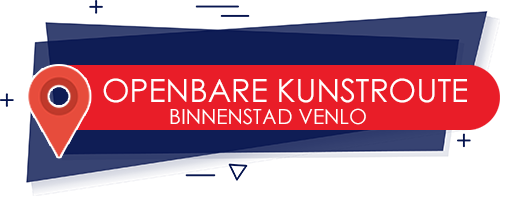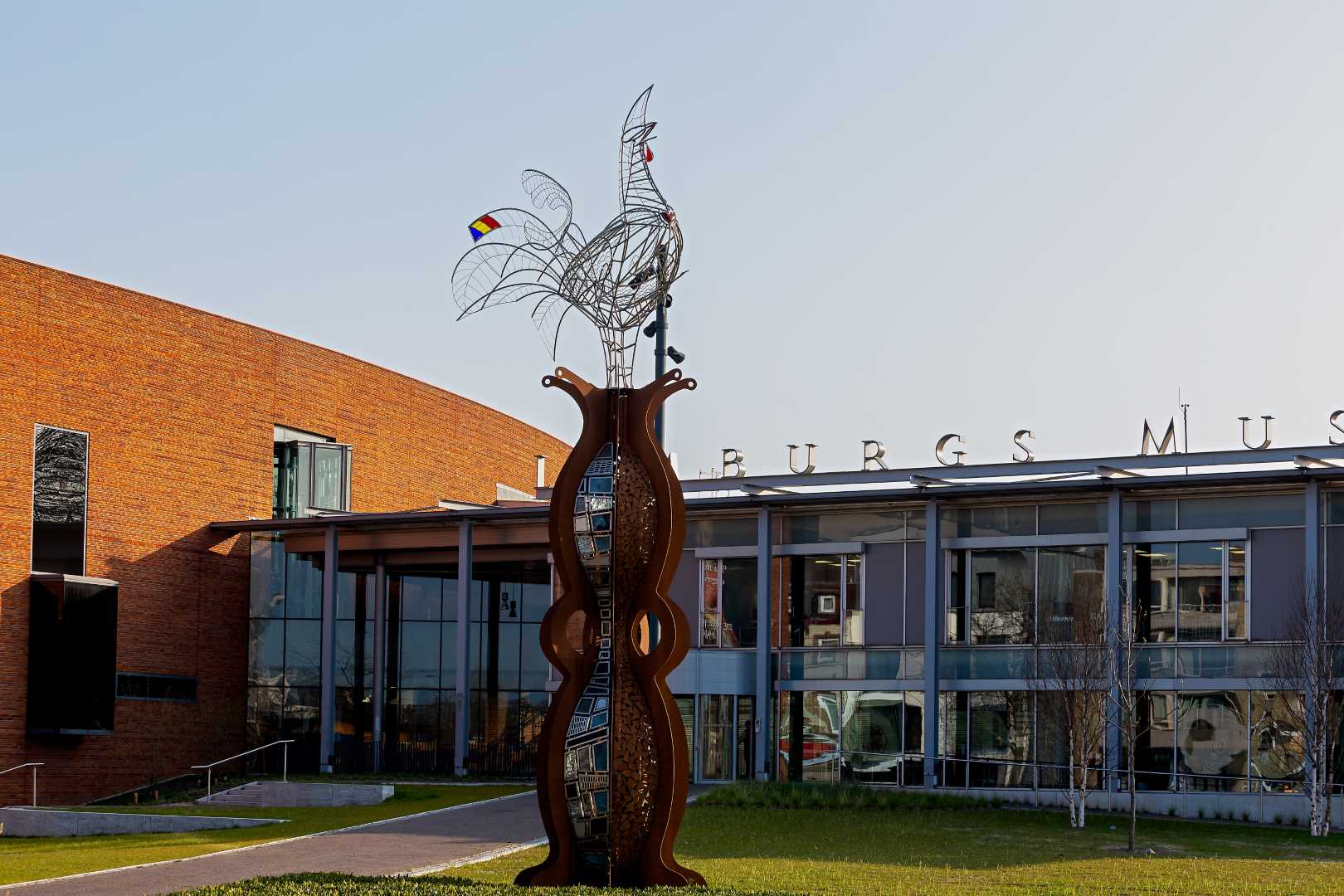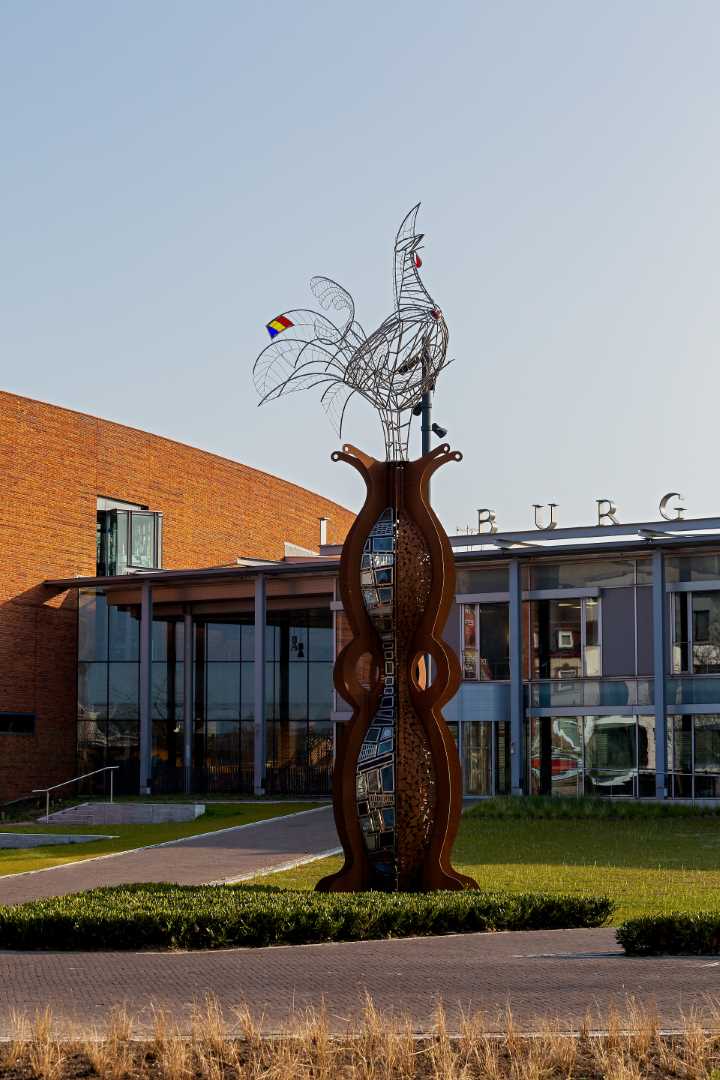Jocus Haan
Keulsepoort
Jocus Haan (Jocus Rooster) – Rik van Rijswick
D’n Haan is Rik van Rijswick’s version of Jocus Haan, the symbol of the Venlo-based vastelaoves company of the same name. The vasteloaves company commissioned the work of art as a gift to the city. As of November 2019, you will find D’n Haan in a prominent place in front of the Limburgs Museum. Travellers walking into town from the train station will be welcomed by the rooster.
The idea arose on the eve of the 16 x 11 jubilee year of Jocus. It was clear to everyone involved that the gift should be a work of art symbolising the inhabitants of Venlo. At the time, Jocus was in contact with artist Rik van Rijswick because of his initiative to have his sculpture of The Peaceful Warrior returned to the spot where it had previously stood on De Kop van de Weerd. Speaking about Jocus Haan prior to the unveiling, Van Rijswick said: “I understood the feeling and the symbolism that this work of art had to convey. A large, proud cockerel on top of a sceptre. A sculpture that fits Jocus, an association where traditions are held in high esteem.”
Both new and residual materials have been used in the sculpture. All of them come from Venlo companies that are active in the manufacturing industry. The beating heart of the Jocus rooster is placed centrally in the sculpture. On the one hand it symbolises strength, courage, solidarity, but also vulnerability. On the other hand, it represents the heart of the city of Venlo.
The artist: Rik van Rijswick
After completing his secondary school education, Rik van Rijswick (Tegelen, 4 March 1972) went to the Graphic School in Eindhoven and the Fontys Institute for Product Design to start work as a freelance artist. De Krijger is not his only large-scale work of art that can be seen in the centre of Venlo. On the museum square at Keulsepoort, there is D’n Haan, his version of Jocus Haan, the symbol of Venlo Vastelaoves Gezelschap Jocus. In Beesel, a roundabout features De Draak, a reference to the Dragon Games that are held in this village once every seven years.
For a long time, Van Rijswick only made free work such as a series of Guardians or Watchmen. Until one day he ’emptied his soul’ and began to work on commission. He always looks for the common denominator so that both artist and client are satisfied with the creative process and the final result.
The Keulse Gate
As one of the four main gates, the Keulsepoort was for a long time part of the fortifications of the city of Venlo built between 1340 and 1345. In the 19th century, these fortifications – like those of many other Dutch cities – became so constricted that it was decided to demolish them. That happened between 1867 and 1872. Work at the site in 2011 revealed that the foundations of the gate are still intact underground.
After the city walls were demolished, the Köln-Minden railway line was built at Cologne Gate and what is now the (adjacent) Julian Park. This was a German railway line that was part of the Hamburg-Paris route. Just before the Second World War, near the foundations of the Keulsepoort, the building was constructed that served as a post office for a long time, but nowadays houses the Van Bommel van Dam Museum.
The railway track disappeared after the war and was replaced by Julianapark. After that, the Keulsepoort was one of the access roads for car traffic to the inner city for several decades. That road was closed off at the end of the last century, after which the Keulsepoort became a square. In 2000, the Limburgs Museum was built on that square, and in 2021, the Van Bommel van Dam Museum opened its doors in the adjacent, former post office, after having been located on the Deken van Oppensingel, a few hundred metres away, for about fifty years. That building was specially built for the museum and also housed the two founders, Maarten and Reina van Bommel-van Dam. In 2021, a start was also made on the redevelopment of the Keulsepoort, which has been given a greener character, among other things. Because of the presence of the two museums, the Keulsepoort is often called Museumplein in popular speech. Opposite the Limburgs Museum is a building that was originally one of the oldest and perhaps the oldest petrol stations in the Netherlands. It dates from 1933 and belonged to the American Petroleum Company (later Esso). Nowadays, there is a catering establishment in it.



